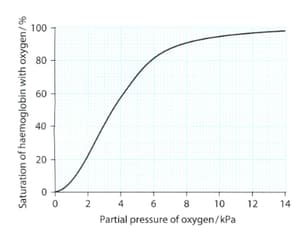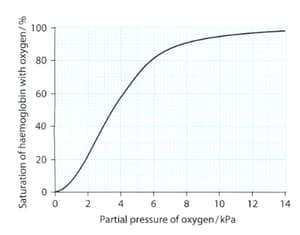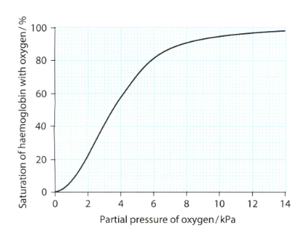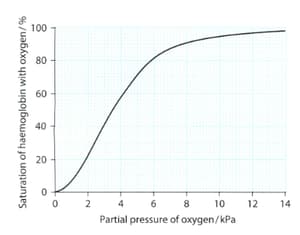In a healthy adult human, there is about 150 gm of haemoglobin in 1 dm3 of blood. 1 gm of haemoglobin combines with 1.3 dm3 of oxygen at body temperature. Calculate how much oxygen can be carried by 1dm3 of blood.

Important Questions on Transport in Mammals
Use the given dissociation curve in the given figure and answer the question:
The partial pressure of oxygen in the alveoli of the lungs is about 12kPa. What is the percentage saturation of haemoglobin in the capillaries in the lungs?

Use the given dissociation curve in the given figure and answer the question:

If 1 gm of fully saturated haemoglobin is combined with 1.3 cm3 of oxygen, how much oxygen will 1 gm of haemoglobin in the capillaries in the lungs be combined with?
Use the given figure and answer the question:

The partial pressure of oxygen in an actively respiring muscle is about 2 KPa. What is the percentage saturation of haemoglobin in the capillaries of such a muscle?
Use the given dissociation curve in the given figure and answer the question:

How much oxygen will 1 gm of haemoglobin in the capillaries of this muscle be combined with?
The following statement was made by candidate in an examination answer. Explain what is wrong with this statement.
Oxyhaemoglobin gradually releases its oxygen as it passes from the lungs to a muscle.
The following statement was made by candidate in an examination answer. Explain what is wrong with this statement.
Strong walls of the arteries enable them to pump blood around the body.
